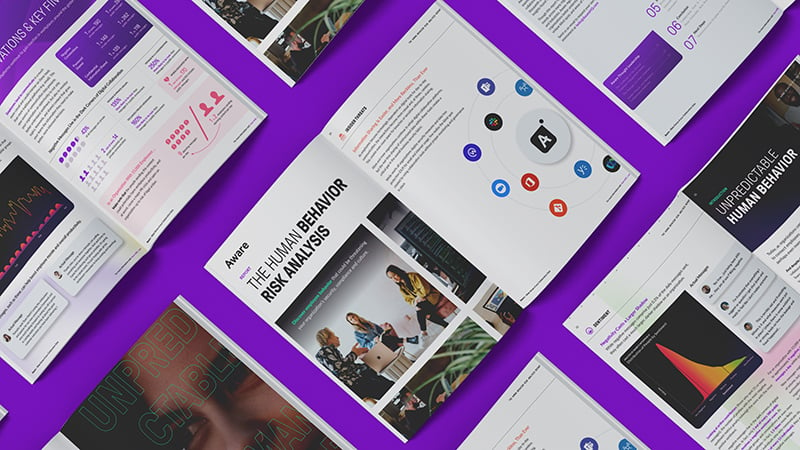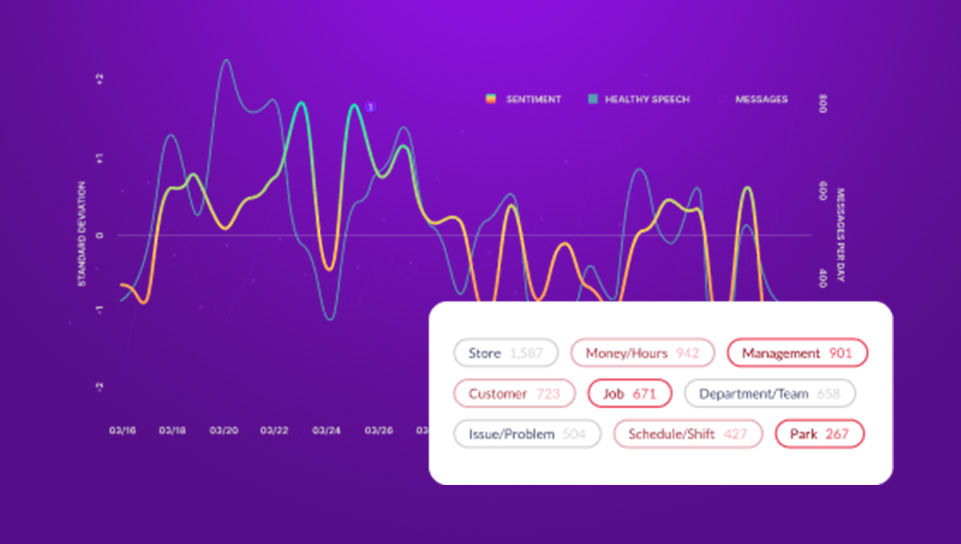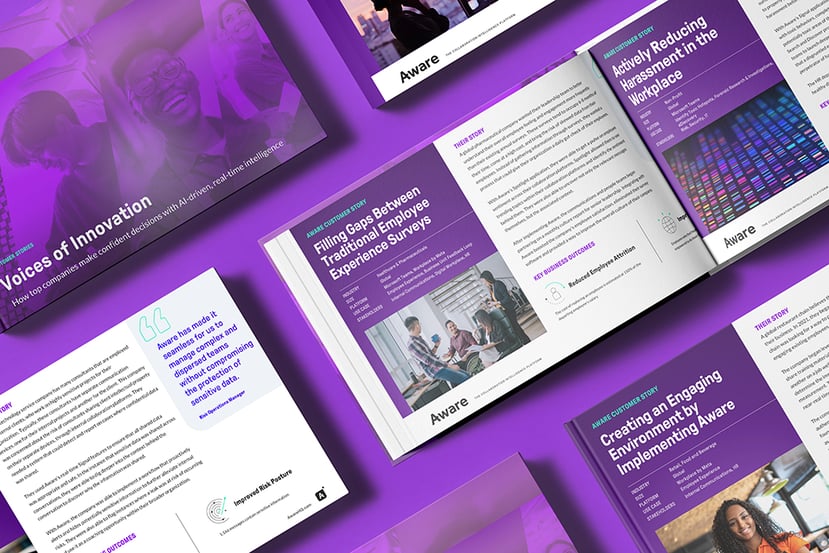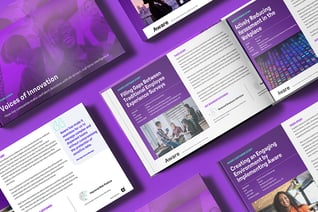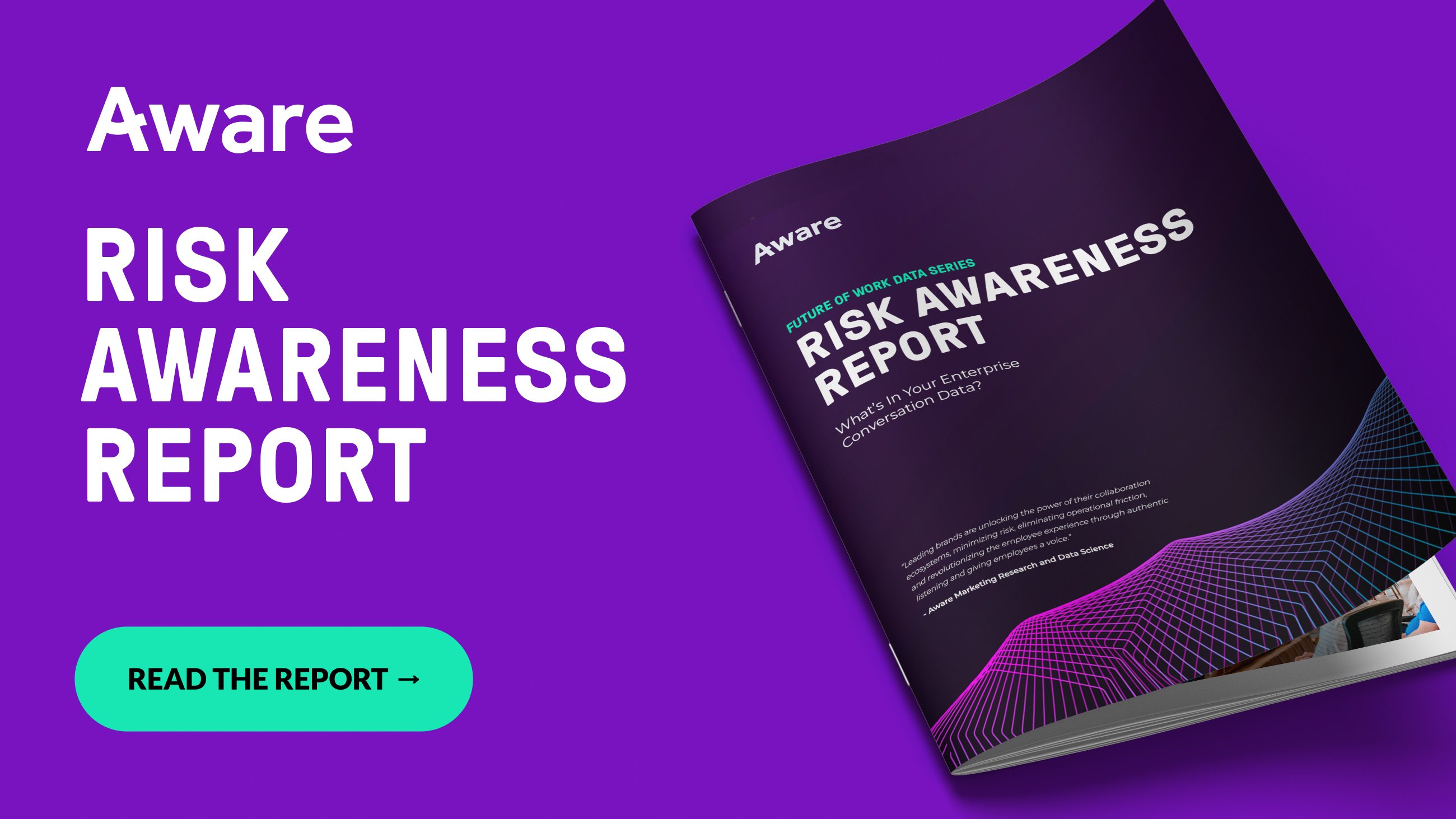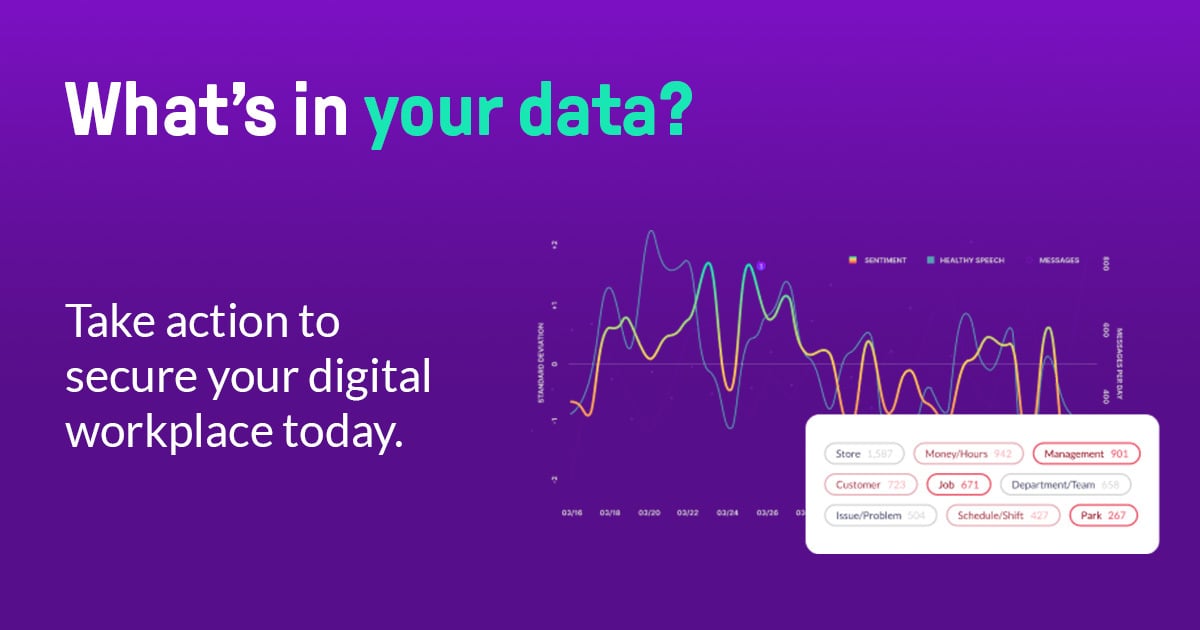5 Reasons Why You Need DLP for Slack
by Aware
Slack is at the center of your new workflow, packed with all the sensitive and confidential data your business owns. Here are five potential ways that data could leave your control, and how to mitigate those risks with Slack DLP.
Risk 1: Acceptable Use Violations
Every business should outline acceptable and unacceptable use of company-provided software, but when it comes to collaboration tools like Slack, the rules may become blurred. While most employees understand what is and isn’t appropriate for work, they may not understand the nuances of sharing sensitive data within work-sanctioned tools.
For example, a company’s acceptable use policy might limit code sharing to specific Slack channels to ring-fence proprietary company data. However, a developer might not understand the risks of sharing a few snippets of code within a different private channel or direct message. But if every dev shares this attitude, the proliferation of code within Slack could quickly spread out of control.
Risk 2: Early Case Assessment
Faced with potential legal action, it’s essential for business leaders to understand the scope of their exposure. This requires the ability to access a complete record of all relevant Slack communications, whether they took place within public or private channels or direct messages. Investigators also need to understand the context within which messages were exchanged.
Imagine a former employee sues, claiming they were harassed by their manager. The manager says the worker is disgruntled and lying, the claimant says the manager deleted the incriminating messages they sent. Getting to the heart of the matter and uncovering the truth requires federated search capabilities that deliver complete, contextual results, including any edits or deletions.
-min.png)
Make sense of your JSON files. Get fast, effective eDiscovery for Slack with Aware.
Risk 3: Compliance Audits and Regulatory Inspections
Most companies handle some kind of sensitive or regulated data as part of the day-to-day of doing business. Some of the most common types include personally identifying information (PII), protected health information (PHI), and payment card industry data (PCI). Proactive DLP measures are essential for protecting this data from loss or exfiltration.
Establishing policies about how employees handle and safeguard this data is a given but proving that those policies are followed is more complex. The ability to prove a negative may be essential to passing an inspection or audit, but can also be extremely costly, time consuming, and inconclusive if the only solution is manually searching Slack messages looking for violations.
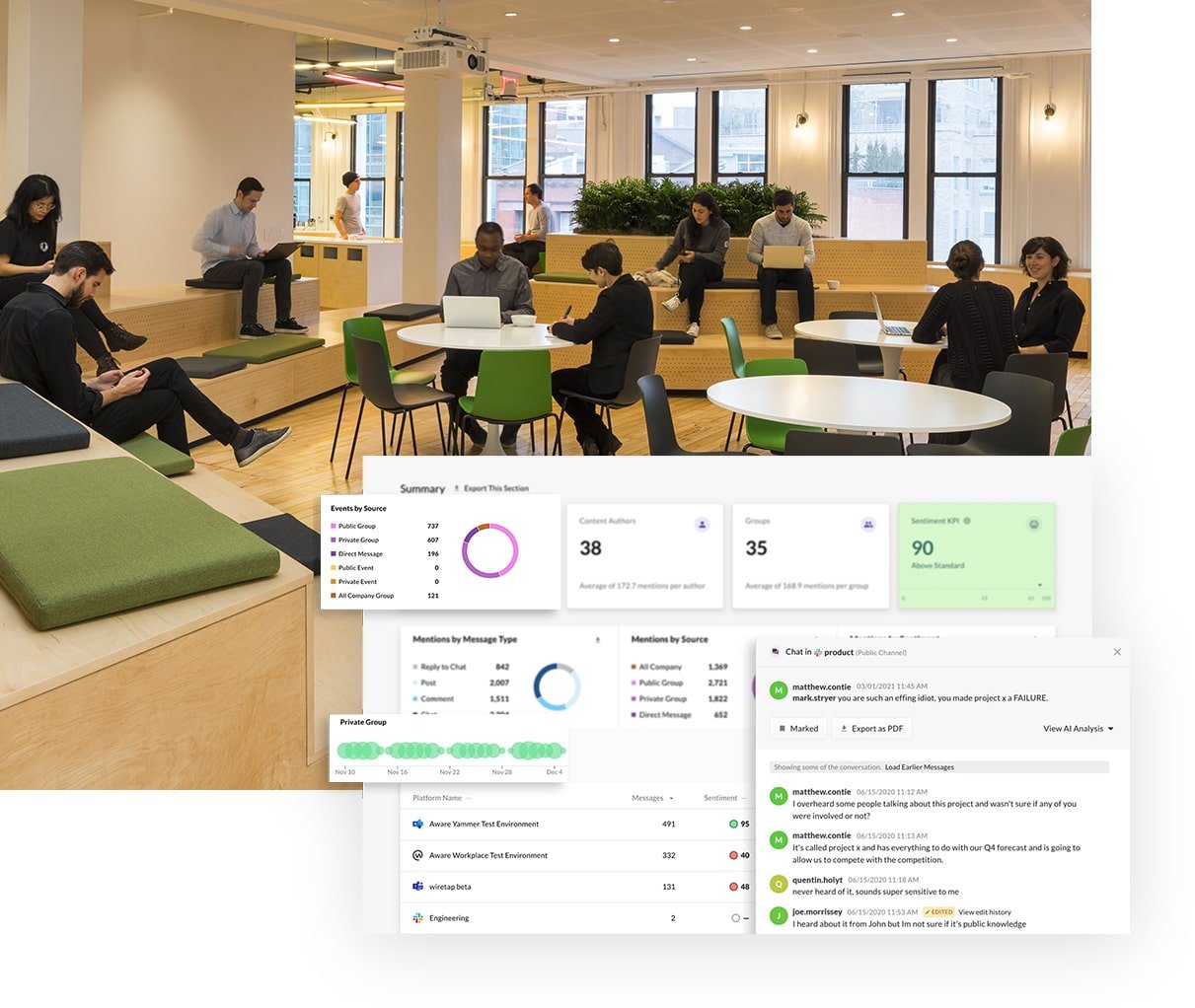
Protect and preserve your Slack data with Slack compliance archiving from Aware.
Risk 4: External Threat Actors
Corporate IP can be the most valuable asset a business owns, and the digital workplace is under constant attack from external threat actors seeking access to cloud-based applications like Slack. The Uber hacker deliberately exfiltrated Slack data, and proprietary game source code and footage was exfiltrated from the Slack environments of both EA Games and Rockstar Games.
Monitoring the movement of sensitive information within Slack is an essential component of any infosec policy, especially in the aftermath of known security incidents such as phishing or MFA fatigue attacks—both common vectors through which threat actors access Slack and other cloud-based environments. Successfully protecting IP and proprietary data necessitates security solutions that can be customized for the individual organization’s needs.
Risk 5: Insider Threat Incidents
With so much protected, sensitive, and confidential information contained within digital workplace tools, insider threat incidents are an ever-growing risk to the modern enterprise. Slack and similar collaboration platforms enable employees to instantly transmit files, images, and text between devices and immediately erase the evidence, providing new channels through which a malicious actor can exfiltrate data.
While a malicious or disgruntled insider can strike at any moment, some events do make an attack more likely to occur. Following a round of layoffs or period of belt-tightening, employees can feel undervalued and unappreciated, which in turn can make them more careless with company data. Sentiment analysis using natural language processing AI models normalized for the individual organization can help give People and Security leaders advanced notice when the risk of insider threat incidents begins to climb.
5 Collaboration Data Risks, 1 Solution
Aware AI Platform for Employee Listening is the only solution that can address all these risks for every platform where employees speak, all from a single, centralized dashboard. Customized workflows automate the detection and remediation of sensitive and proprietary information-sharing outside of authorized channels, and industry-leading, proprietary language analysis provides near-human sentiment and toxicity detection, giving leaders a real-time pulse of the shifting mood of the organization.
- Enforce acceptable use with automated coaching for noncompliant employees—prevent data from leaving predefined safe areas
- Perform effortless early case assessment with contextual federated search, including edits and deletions—avoid the loss of data through unauthorized revision or removal
- Prove a negative in compliance audits with real-time compliance monitoring and mitigation—demonstrate compliant handling of regulated data
- Control the flow of sensitive information with customized workflows that flag suspicious behavior—ensure that data the company values remains within its control
- Get proactive about insider threat detection by listening authentically to what your employees expect from the org—prevent malicious or accidental loss of company data
With Aware, businesses can take a new approach to data loss prevention in collaboration tools like Slack, Teams, and Zoom, by proactively managing the flow of information throughout the digital workplace. Aware connects seamlessly through native APIs and webhooks, meaning there is no impact on the end user experience. Empower your employees to collaborate effectively, while ensuring your valuable data is secured.
